- Blog
- 8 Conversion Rate Optimization Tests for Every Ecommerce Website
8 Conversion Rate Optimization Tests for Every Ecommerce Website
-
OptiMonk
- Conversion
- 6 min read
Table of Contents
A survey suggests that the global average website conversion rate stands at a meek 2.86%. Not very good, right?
If you’d like to get more precise, you can check out the ecommerce conversion rate by industry below.
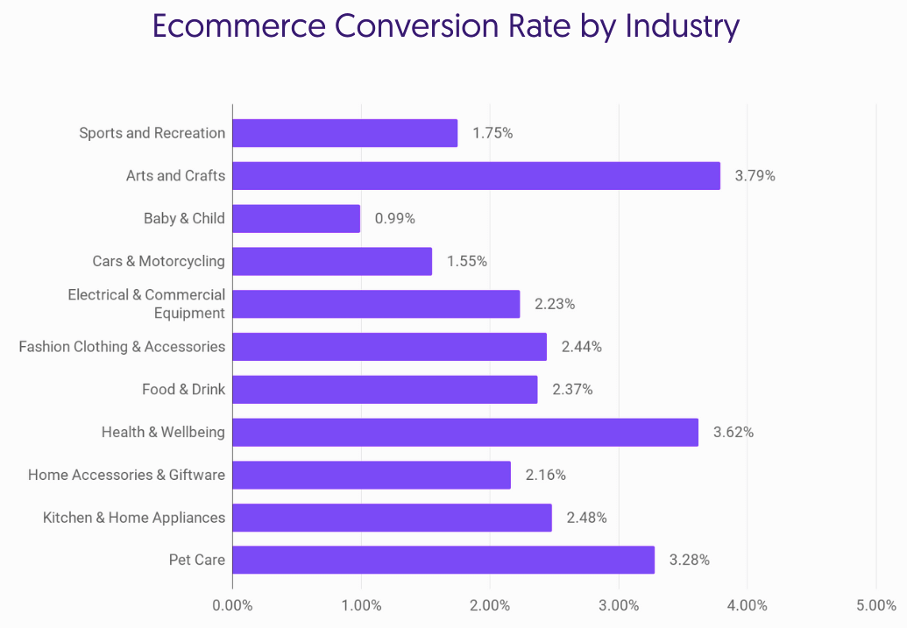
Source: Smart Insights
As you know, conversions are directly associated with sales and revenue. If you want your website to become a success, you need to beat these average industry benchmarks.
25% of industry leaders get conversion rates of 5.31% or higher by simply using ecommerce CRO tools, and you can do the same.
This article will help you understand exactly what conversion rate optimization is, why it matters, and how to use some of the best CRO tests and strategies to make your ecommerce business a success.
Let’s get started!
What is conversion rate optimization?
CRO, or conversion rate optimization, refers to the process of applying different tests and strategies to your ecommerce store to help boost conversions and sales.
At its essence, CRO involves analyzing user behavior, identifying areas for improvement, and implementing strategic changes to optimize the conversion funnel.
Why should you run CRO tests?
Since average conversion rates are so low and competition is growing by the day, CRO testing becomes essential for your ecommerce website for several reasons:
1. Data-driven decision-making
You’re constantly making decisions for your brand’s growth, and this can be quite challenging if you’re not using CRO.
A CRO test helps you analyze different aspects of your website through processes like A/B testing or multivariate testing.
This helps you gain insights on what works, so you can make informed decisions based on data, not guesswork. You’ll be more confident about the viability of your decisions, and they’ll lead to better results.
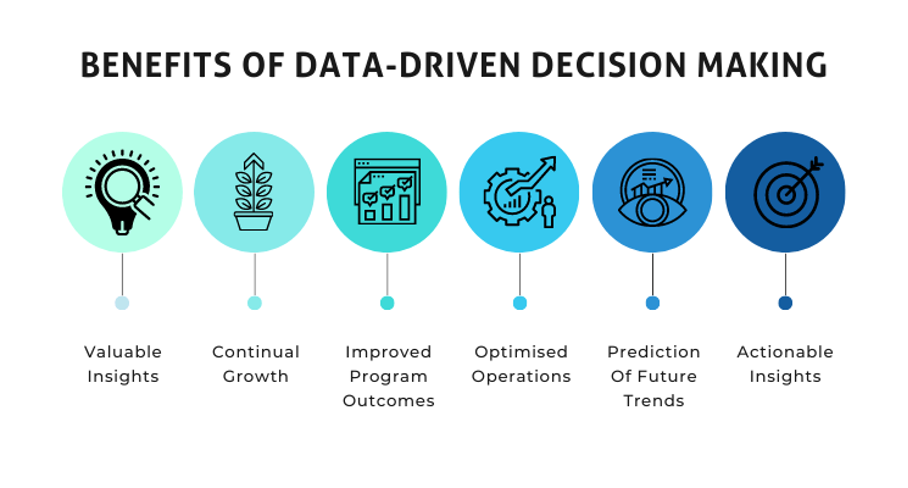
Source: Altis Logo
2. Increased revenue and business growth
As you make the required changes and optimize your website or landing page for more conversions, you’ll experience an increase in sales over time, thereby generating more revenue and driving business growth.
3. Competitive edge
CRO testing also gives you a competitive edge in the marketplace.
As you test, adjust, and optimize, you’ll be making strategic changes to your website that improve the user experience and increase conversions.
These improvements put you ahead of the game.
4. Secure
CRO tests are a secure method for testing and experimenting on your website.
When you run a CRO test, you get critical insights into user behavior and trends without making changes to your live website.
This saves you from the hassle of continuously updating your website, and it’s more secure since you’ll be able to make better decisions by working on the backend development while your original live site remains intact.
5. Gain a better understanding of your website visitors
CRO tests help you better understand your target audience and website visitors by providing relevant data and information on individuals’ behavior and overarching trends.
This helps with product planning, and you can easily increase conversions by launching the products that customers want most.
8 CRO test ideas you should be running
Now that you understand the importance and benefits of running CRO tests, you’re probably wondering which ones you should be using.
Well, here are eight of the best CRO tests to run on your ecommerce site!
1. Optimize site speed
A study by Portent reveals that the first five seconds of the page load time are essential for conversions. The conversion rate drops by about 4.42% for each additional second that a website takes to load.
It also states that the ecommerce websites that experience the highest conversion rates have page loading times between 0-2 seconds.
There are many different ways to boost website speed, but these are some of the most useful tactics:
- Image optimization: Large images make the website bulky and slow it down. Focus on keeping your images as compressed as possible while also maintaining quality.
- Browser caching: Caching helps the website pages load faster as the data is already saved in the cache memory. All you need to do to use this tactic is select the right cache settings on your website.
- A clean code: Bulky, cumbersome code will also slow your website down. To optimize site speed, ensure that your code is clean and organized.
- Fast content delivery network: Ensure you’re using a high-quality content delivery network, as this determines how quickly content loads on your website.
- Dedicated hosting plan: Your website hosting is also an important piece of the puzzle when it comes to website speed. Ensure that you take up a dedicated hosting plan that promises fast servers and zero downtime. A great option is to get a United States VPS which will provide more security and better control over your hosting.
- Lazy loading: This is a great technique for speed optimization. With the pages and content loading asynchronously, the visitors won’t have to wait for the entire page to load. This means they can consume the content faster, and images will load only when the users scroll down to them.
Additionally, you can avoid redirects, enable GZIP compression on your site and follow other SEO tactics to boost speed—and as a result, conversions.
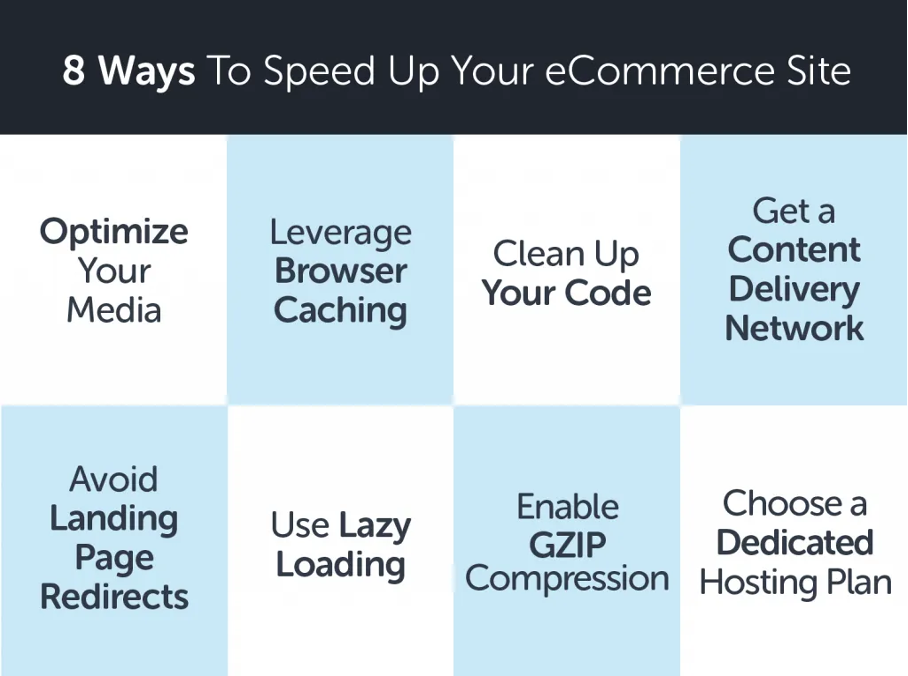
Source: Nexcess
2. Add scarcity to create urgency
“While supplies last,” “Only 2 left in stock,” “Limited-time offer,” … these terms are commonly seen on ecommerce websites. And that’s because scarcity works!
When you create scarcity for your products, it gives the impression that they’re highly in demand. People will want to buy a product before it sells out, which will increase your website’s conversion rate.
Here’s how Amazon adds scarcity to create urgency for buying the products:
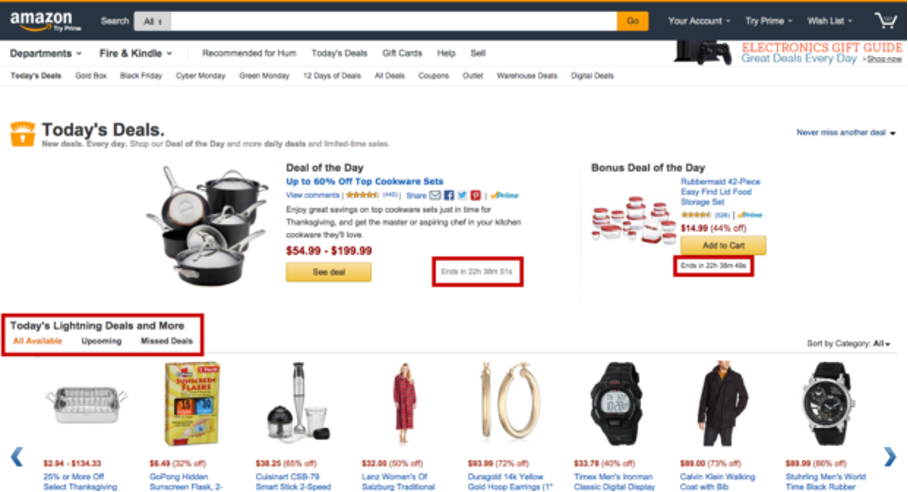
Popups with a countdown timer are also a great way to increase urgency and conversion rates.
Try running a CRO test with a popup like the one below for cart abandoners and see how your bounce rate will decrease.
3. Add social proof
Social proof is incredibly important for people when they’re shopping.
Whether they take advice from friends and family or read customer reviews before making a purchase, they want to know that other people have tried a product and liked it.
In fact, statistics reveal that people read at least one and up to six customer reviews before making up their minds.
So another great CRO test to try on your landing pages and product pages is adding a review section. Reading other people’s experiences will help remove customer doubt.
Here’s an example of how you can add social proof to your website:
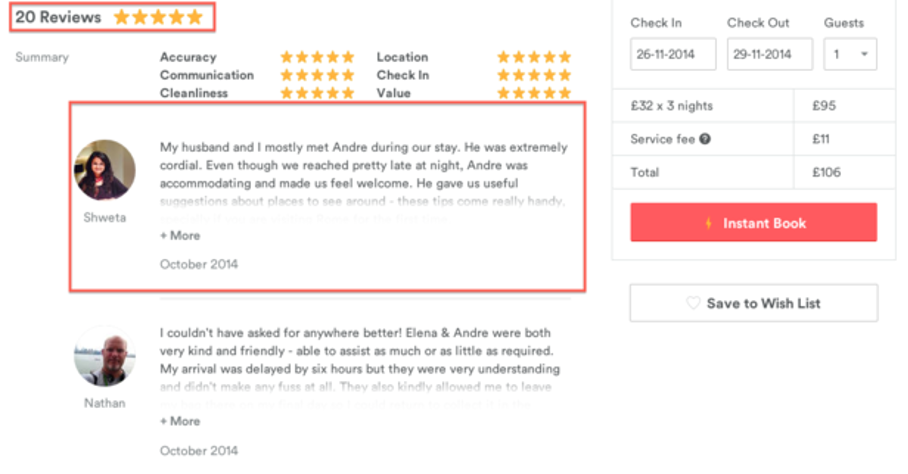
Source: Econsultancy
4. CTA placement
A call-to-action is a direct invitation to the visitors to buy your product, and it’s the best way to boost conversions. However, your CTAs need to be attractive and visible to the visitors to achieve your conversion goals.
You can test out different ways to add CTAs, use different texts and visual styles, and even add popups to add to the appeal and attractiveness of your CTAs.
In fact, adding a CTA as a popup to appear just when a visitor is about to leave your website can help boost conversions significantly.
Here are a few examples of CTAs on popups that you can use for boosting conversions on your website:
5. Test headlines on your landing page
Running a CRO test for the headlines of your landing page is another pivotal strategy to ensure your message resonates effectively with your audience.
Your landing page’s headline serves as the first impression and needs to succinctly convey your unique selling propositions. By conducting A/B tests on headline copy, you can pinpoint which messaging style best captures your audience’s attention.
For instance, Crown & Paw experimented with various headlines on their homepage, leveraging OptiMonk’s Smart Headline Generator for quick ideas.
This CRO test resulted in a 16% increase in orders.
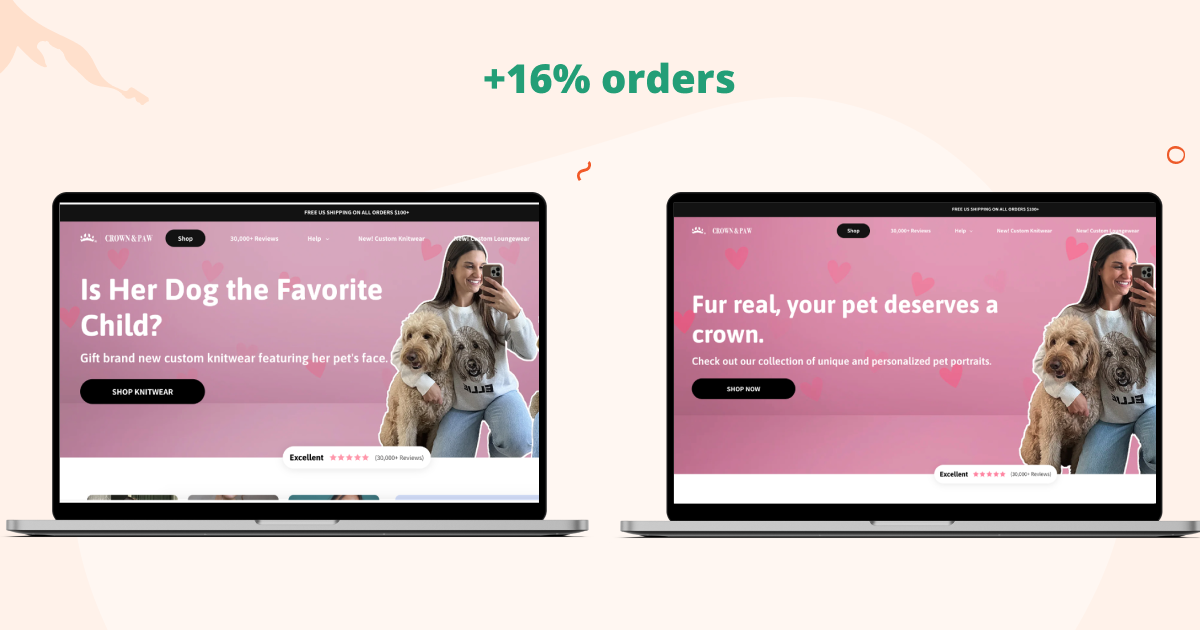
6. Live chat
Another CRO test you could try is adding a live chat option to your ecommerce store. This helps make the customers feel welcomed and supported.
They’ll feel that they can easily get answers to their queries and questions, which makes a huge difference.
For instance, a simple message, “Welcome to our ecommerce website! I’ll be your shopping guide and assistant for today!” can grab the instant attention of the customers and make them want to explore more and ask questions.
This way, you add a personal touch to the customer experience, which helps drive conversions and sales.
However, when adding a live chat option, you must also ensure that the messages don’t keep popping up on customers’ screens, otherwise, they could get irritated… turning a good tactic into a mistake!
Here’s an example of a Live Chat option that you might add:
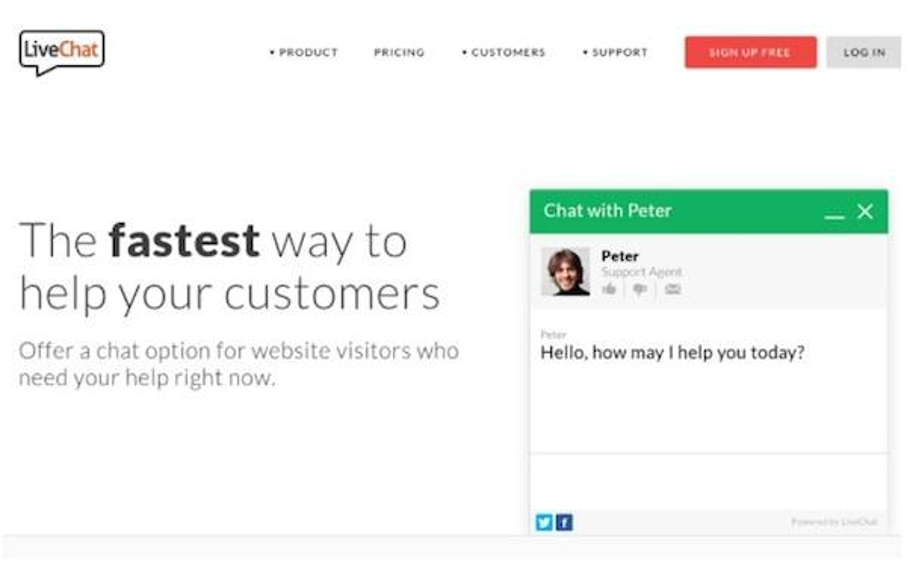
Source: Ecommerce Platforms
7. Optimize the checkout process
Statistics reveal that almost 60% of customers abandon their shopping carts at checkout.
And 18% of customers abandon their shopping cart simply because they find the checkout process too complicated.
So simplifying the checkout process and optimizing it by offering single-page checkout or one-click checkout options will be a great way to boost your conversions.
8. Include free extras
A survey by Deloitte found that 85% of customers look for free shipping. It’s basic human psychology to be tempted by freebies and extra products.
Offering free extras on your ecommerce store can be very helpful for boosting sales and conversions. You can add them to your product page or even display them on popups.
If you’d like to learn how to create high-converting popups for your ecommerce store, check out this ultimate guide.
Searching for more ways to optimize conversions? This video provides proven tips to increase your revenue:
3 CRO testing tools
As you start out with the aforementioned CRO tests on your ecommerce site, you’ll quickly realize that you need the right CRO testing tools for the purpose.
Below, we’ll introduce you to the best tools for your CRO tests.
1. OptiMonk
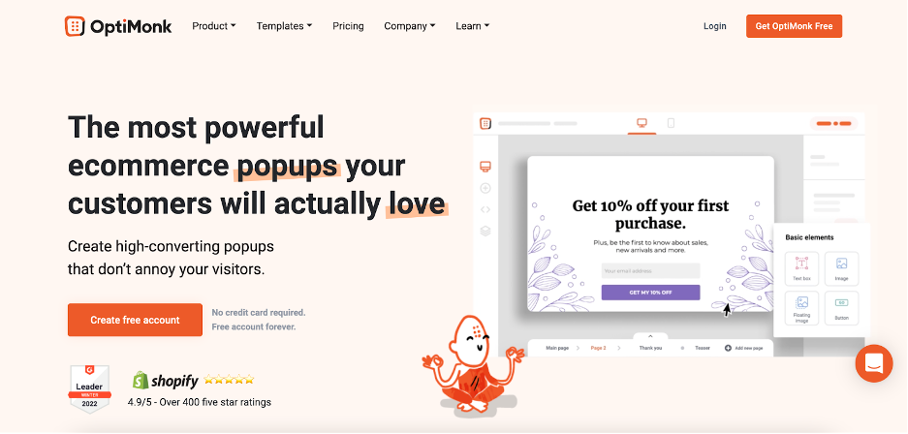
Free plan: Available
Pricing: Starting from $29/month
OptiMonk is a powerful ecommerce popup tool that helps you to reduce cart abandonment rates, build lists, recommend products, highlight promotional offers or discounts, and more.
With all these features, performing CRO tasks like optimizing the checkout process or including free extras becomes simple.
Here are some of OptiMonk’s features:
- A huge template library for creating popups and messages.
- A drag and drop editor for quick, easy customization.
- Conversion tools like A/B testing and dynamic text replacement.
- Ecommerce integration with platforms like Shopify, WooCommerce, etc.
- Security tools and features like AdBlock, GDPR compliance, etc.
2. Hotjar
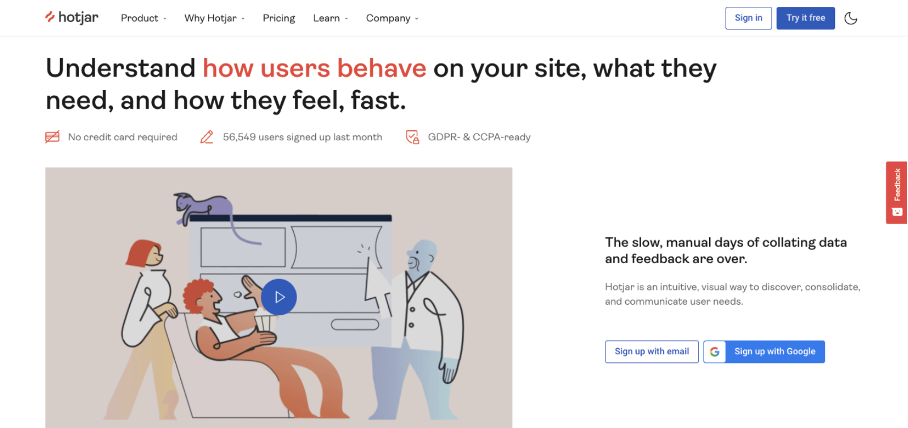
Free trial: Available
Pricing: $31/month for Plus plan, $79/month for Business plan
Hotjar is another amazing CRO test tool that helps you understand customer behavior. Using Hotjar features, you can easily understand what your audience is looking for and offer exactly that, leading to higher conversions.
Here are some of Hotjar’s features:
- Heatmaps that help get insights on user behavior.
- Recordings that track what the users are seeing and doing on your website.
- Feedback and surveys to connect with your users directly and understand their opinions.
3. Heap
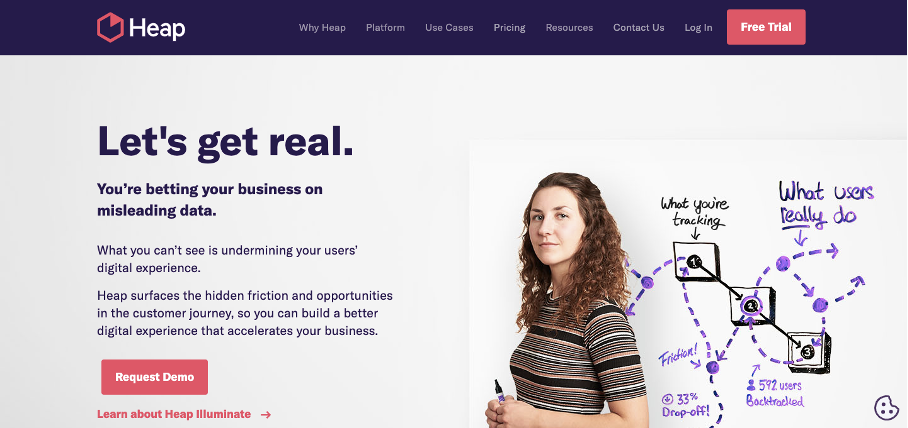
Free trial: Available
Pricing: $3600/year for Growth plan
Heap helps you get insights into user behavior by checking and recording customer activities on your site and suggesting improvements to create better experiences and drive more conversions.
Here are some of Heap’s features:
- Data analysis, with detailed insights presented in visual formats and reports.
- Integration with other apps for easier management of your ecommerce store.
- Data management to keep all the data in one place for better insights and analysis.
- Security features to prevent your website and data from any online breach or attack.
FAQ
How can I get started with CRO testing?
To get started with CRO testing, begin by identifying your goals and key performance indicators (KPIs). Then, conduct research to understand your target audience and their behavior on your website. Once you have gathered data, start implementing A/B tests and other CRO strategies to optimize different elements of your website, such as headlines, CTAs, and checkout process.
What are some common CRO test ideas for ecommerce websites?
Some common CRO test ideas for ecommerce websites include split testing headlines, adding scarcity to create urgency, incorporating social proof, optimizing CTA placement, streamlining the checkout process, and offering free extras.
How long should I run a CRO test?
The duration of a CRO test depends on various factors, including the size of your website traffic and the magnitude of the changes being tested. In general, it’s recommended to run tests for at least one to two weeks to ensure that you capture enough data to make informed decisions.
What tools can I use for CRO testing?
There are several CRO testing software available for ecommerce websites. Some popular options include OptiMonk, Optimizely, VWO, and Crazy Egg.
Ready to implement these CRO tests on your ecommerce website?
We’ve taken a look at how to use CRO testing for ecommerce websites, as well as three of the top tools to make CRO a breeze.
By using these tools to boost your conversion rates, your store’s performance will improve exponentially and you’ll be that much closer to your goals.
It goes without saying that these tests are an absolute must if you want to scale your website and go beyond those average or “benchmark” conversion rates.
So go on, follow these tests as soon as possible to boost your conversions and revenues like never before!
About the author
Irov Vaul is a content marketing specialist, demand generation enthusiast, and team player who is currently working with Linkoholics. He helps B2B SaaS companies spread the word about their products through engaging content. When he is not working he likes playing video games on his PS4.
Migration has never been easier
We made switching a no-brainer with our free, white-glove onboarding service so you can get started in the blink of an eye.

What should you do next?
Thanks for reading till the end. Here are 4 ways we can help you grow your business:
Boost conversions with proven use cases
Explore our Use Case Library, filled with actionable personalization examples and step-by-step guides to unlock your website's full potential. Check out Use Case Library
Create a free OptiMonk account
Create a free OptiMonk account and easily get started with popups and conversion rate optimization. Get OptiMonk free
Get advice from a CRO expert
Schedule a personalized discovery call with one of our experts to explore how OptiMonk can help you grow your business. Book a demo
Join our weekly newsletter
Real CRO insights & marketing tips. No fluff. Straight to your inbox. Subscribe now
- Posted in
- Conversion
Partner with us
- © OptiMonk. All rights reserved!
- Terms of Use
- Privacy Policy
- Cookie Policy
Product updates: January Release 2025








